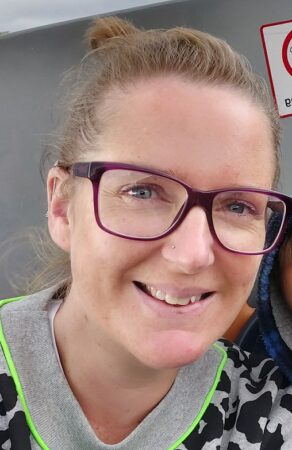Home News & Views Using Emotional Touchpoints
Using Emotional Touchpoints

Chloe Herbert, FoNS Inspire Improvement Fellow and Surgical Matron
Hello, my name is Chloe and I have been a nurse since 2009. I had wanted to begin my nursing career in 1991 but unfortunately aged 5 I wasn’t qualified as just having the outfit and a passion to help others wasn’t quite enough to get me in! The passion stayed with me until I finished school and fortunately I achieved the academic qualifications I needed to start my desired vocation, although I remained painfully shy and I remember my mum telling me if I wanted to be a nurse I would have to be able to speak to people! Not put off I moved away from home to live with 9 complete strangers in halls and completed my degree. I grew in confidence and became quite unrecognisable to my family (living and working in Hammersmith, London I hadn’t had a choice!).
Fast forward to May 2021 after being qualified for 12 years – I submitted an application form hoping to be offered an interview and subsequently a place on the FoNS Inspire Improvement Fellowship Programme. I was in my second year of an acting ward manager role – enjoying the job to the best of my ability (not easy during a pandemic!) and not looking for any new challenges; that is until my Director of Nursing told me about this fascinating programme and encouraged me to apply. The application process was a lot more rigorous than previous programmes and courses I had applied for. I think this added to the status of the programme, I felt that it must be good if it’s difficult to get in! The application form was lengthy and the questions required a lot of thought (just like the programme itself) and also relied on the backing of my line manager and Director of Nursing so I could have the protected time to complete the journey and access the resources I would need to be successful.
For me the nerve-wracking part of the application process was the interview. I had no idea what to expect and what the right answers would be. My line manager was present for the interview and was also asked to answer some questions. Jo was very kind and I think was able to sense my nerves and put me at ease but I still left the interview thinking I’d messed up and given that there were only 15 spaces on offer I would not be invited to take part. Much to my amazement I did get offered a place and it was one of the proudest moments in my career.
The first couple of weeks of learning block one I felt like I needed to find my feet and see where I fitted into the group. The style of learning was nothing like I had experienced before – for one it was all virtual via Zoom and for another, being asked to use different materials to be creative and allow ourselves to really let go was at first uncomfortable. I think we all worried we would somehow get it wrong or get laughed at for being so far out of the box but there are no limitations to the programme and the support and guidance from the facilitators has allowed me personally to unlock new ways of thinking in terms of tackling issues at work and working towards becoming a facilitative leader.
Since being successful in starting my journey with Jo, Pam and Karen I have gone on to apply for another new role within the hospital I work in and am proud to be the newest Surgical Matron at Broomfield. During the 3rd session of our second learning block, starting my new role became the focus of the emotional touchpoint exercise for me. Emotional Touchpoint Information We were put into pairs in the breakout rooms to discuss which touchpoint we had chosen from the list we had received earlier in the week and were encouraged to choose 3 – 4 emotions from the list also provided. I really enjoyed the session and found it so uplifting and encouraging discussing the emotions I had experienced starting a new job. Starting my job, I felt a mixture of positive and negative emotions ranging from guilt and fear to feelings of being fortunate and enthusiastic. The touchpoint exercise allowed me to look deeper into the emotions I experienced and start to understand how I might use this type of tool in my workplace to get feedback from both staff and patients to identify what is happening in practice and identify gaps between what I would like to see in the workplace and what is actually happening.
I am curious and excited to begin planning how to gather feedback using the emotional touchpoint approach after we finish the second learning block. Then we can use the responses to identify themes and work with colleagues to provide solutions. Watch this space!
Comments are closed.

